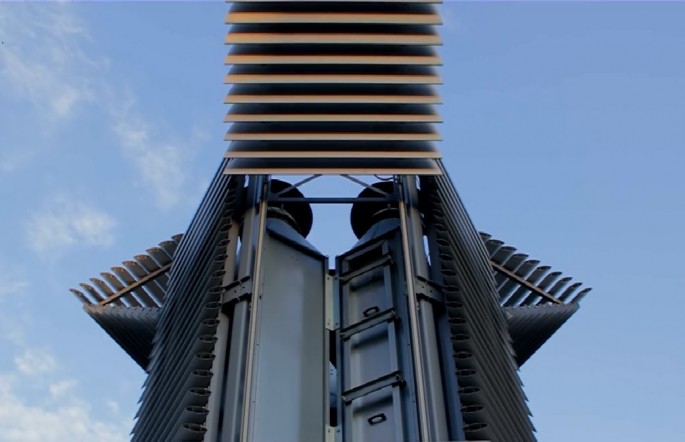According to a press release by Studio Roosegaarde, the company who built the Smog Free Tower which is a project supported by China's Ministry of Environmental Protection, the first chapter of the project's China tour has been concluded successfully with test results revealing a 55 percent cleaner air in the vicinity of the tower.
The tower, which was exhibited in Beijing and will continue its tour to other Chinese cities, had been reported to have cleaned a volume of 30 million cubic meters of Beijing's air. This was equivalent to a volume of 10 Beijing National Stadiums.
During its exhibition time of 41 days which began in September, the tower had captured billions of harmful PM2.5 airborne particles. These smog particles amounted to a total of 400 grams, with the official notarization of 312 grams and a 25 percent residue in the equipment.
The project which also included the Smog Free Jewellery had produced 300 rings from the smog particles collected by the tower. The particles were compressed into small cubes and were used to decorate the rings. Each cube was equivalent to 1000 cubic meters of clean air.
According to Roosegaarde, the result was a validation of their claim of a "substantial reduction of airborne particulate matter."
However, some groups had a different opinion. AllChinaTech.com reported that according to the China Forum of Environmental Journalists (CFEJ), the "tower did show some signs of purifying the air but the effect was unstable and the effective range was very much limited to its immediate surroundings".
It further reported that the tests done in early November showed that the concentration of PM2.5 was 89 micrograms per cubic meter, a value way beyond the recommended maximum of the World Health Organization which is 25 micrograms per cubic meter over a 24-hour period.
One report said that CEFJ would rename the tower to Smog Alert Tower and the project would proceed to its series of environmental education activities. Liu Guozheng, Secretary-General of CFEJ, said that there is a need for universal participation and co-governance to solve the problem of air pollution which is a long and arduous task. With regard to this, the tower will continue its positive role in promoting awareness.



























